Evidence for a limit to human lifespan
- PMID: 27706136
- PMCID: PMC11673931
- DOI: 10.1038/nature19793
Evidence for a limit to human lifespan
Abstract
Driven by technological progress, human life expectancy has increased greatly since the nineteenth century. Demographic evidence has revealed an ongoing reduction in old-age mortality and a rise of the maximum age at death, which may gradually extend human longevity. Together with observations that lifespan in various animal species is flexible and can be increased by genetic or pharmaceutical intervention, these results have led to suggestions that longevity may not be subject to strict, species-specific genetic constraints. Here, by analysing global demographic data, we show that improvements in survival with age tend to decline after age 100, and that the age at death of the world's oldest person has not increased since the 1990s. Our results strongly suggest that the maximum lifespan of humans is fixed and subject to natural constraints.
Figures
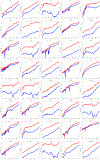
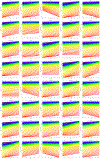
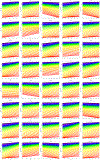
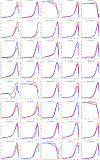
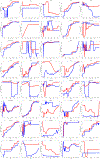



Comment in
-
Ageing: Measuring our narrow strip of life.Nature. 2016 Oct 13;538(7624):175-176. doi: 10.1038/nature19475. Epub 2016 Oct 5. Nature. 2016. PMID: 27706138 No abstract available.
-
The limits to human lifespan must be respected.Nature. 2016 Oct 6;538(7623):6. doi: 10.1038/538006a. Nature. 2016. PMID: 27708320 No abstract available.
-
There's no limit to longevity, says study that revives human lifespan debate.Nature. 2018 Jul;559(7712):14-15. doi: 10.1038/d41586-018-05582-3. Nature. 2018. PMID: 29968831 No abstract available.
Similar articles
-
[The remarkable rise in life expectancy and how it will affect medicine].Bundesgesundheitsblatt Gesundheitsforschung Gesundheitsschutz. 2005 May;48(5):586-92. doi: 10.1007/s00103-005-1043-4. Bundesgesundheitsblatt Gesundheitsforschung Gesundheitsschutz. 2005. PMID: 15887070 German.
-
Future longevity-demographic concerns and consequences.J Am Geriatr Soc. 2005 Sep;53(9 Suppl):S299-303. doi: 10.1111/j.1532-5415.2005.53494.x. J Am Geriatr Soc. 2005. PMID: 16131357
-
Twin consequences of rising U.S. death rates among young adults: Lower life expectancy and greater lifespan variability.Prev Med. 2019 Oct;127:105793. doi: 10.1016/j.ypmed.2019.105793. Epub 2019 Aug 6. Prev Med. 2019. PMID: 31398411
-
What is healthy aging in the 21st century?Am J Clin Nutr. 2006 Feb;83(2):404S-409S. doi: 10.1093/ajcn/83.2.404S. Am J Clin Nutr. 2006. PMID: 16470003 Review.
-
Aging: overview.Ann N Y Acad Sci. 2001 Apr;928:1-21. doi: 10.1111/j.1749-6632.2001.tb05631.x. Ann N Y Acad Sci. 2001. PMID: 11795501 Review.
Cited by
-
The landscape of aging.Sci China Life Sci. 2022 Dec;65(12):2354-2454. doi: 10.1007/s11427-022-2161-3. Epub 2022 Sep 2. Sci China Life Sci. 2022. PMID: 36066811 Free PMC article. Review.
-
Probabilistic population forecasting: Short to very long-term.Int J Forecast. 2023 Jan-Mar;39(1):73-97. doi: 10.1016/j.ijforecast.2021.09.001. Epub 2021 Oct 7. Int J Forecast. 2023. PMID: 36568848 Free PMC article.
-
Dong et al. reply.Nature. 2017 Jun 28;546(7660):E12. doi: 10.1038/nature22789. Nature. 2017. PMID: 28658233 No abstract available.
-
Implausibility of radical life extension in humans in the twenty-first century.Nat Aging. 2024 Nov;4(11):1635-1642. doi: 10.1038/s43587-024-00702-3. Epub 2024 Oct 7. Nat Aging. 2024. PMID: 39375565 Free PMC article.
-
Astrocytes in aging.Neuron. 2025 Jan 8;113(1):109-126. doi: 10.1016/j.neuron.2024.12.010. Neuron. 2025. PMID: 39788083 Review.
References
-
- Oeppen J & Vaupel JW Demography. Broken limits to life expectancy. Science 296, 1029–1031 (2002). - PubMed
-
- Austad SN in Molecular and Cellular Biology of Aging (eds Vijg J, Campisi J & Lithgow G) Ch. 2 (The Gerontological Society of America, 2015).
-
- Jeune B. et al. in Supercentenarians (eds Maier H et al.). (Springer, 2010).
-
- Kenyon C. The plasticity of aging: insights from long-lived mutants. Cell 120, 449–460 (2005). - PubMed
MeSH terms
Grants and funding
LinkOut - more resources
Full Text Sources
Other Literature Sources

